When asked if blur in photographs is undesirable because it obscures what is there, William Klein disagreed: “If you look carefully at life, you see blur. Shake your hand. Blur is a part of life.”
This collaborative project, coordinated through the Photography Books and Theory Facebook group, draws inspiration from Klein’s quote. Nine photographers from various countries contributed a photograph and a short text responding to the theme.
Personally, I am struck not just by the quality of the photographs, but also by the variety of interpretations. Hank literally shook his hand. Others held their camera steady, but captured a sense of motion – a car, a bird, a cat, humans – in exposures of varying lengths. Rosemary’s image is blurred by steam, and Flora’s by a failure (refusal?) to focus. Some photographs, like Billy’s, are easily “readable”, while Kathryn’s is distinctly – or should I say indistinctly – abstract. The devices used to make the pictures range from large-format view cameras to modern digital cameras, with a Polaroid thrown in for good measure (delicious irony of a long exposure on “instant” film).
I hope you enjoy the text and photos as much as I enjoyed putting them together.
Rosemary Kate Jesionowski
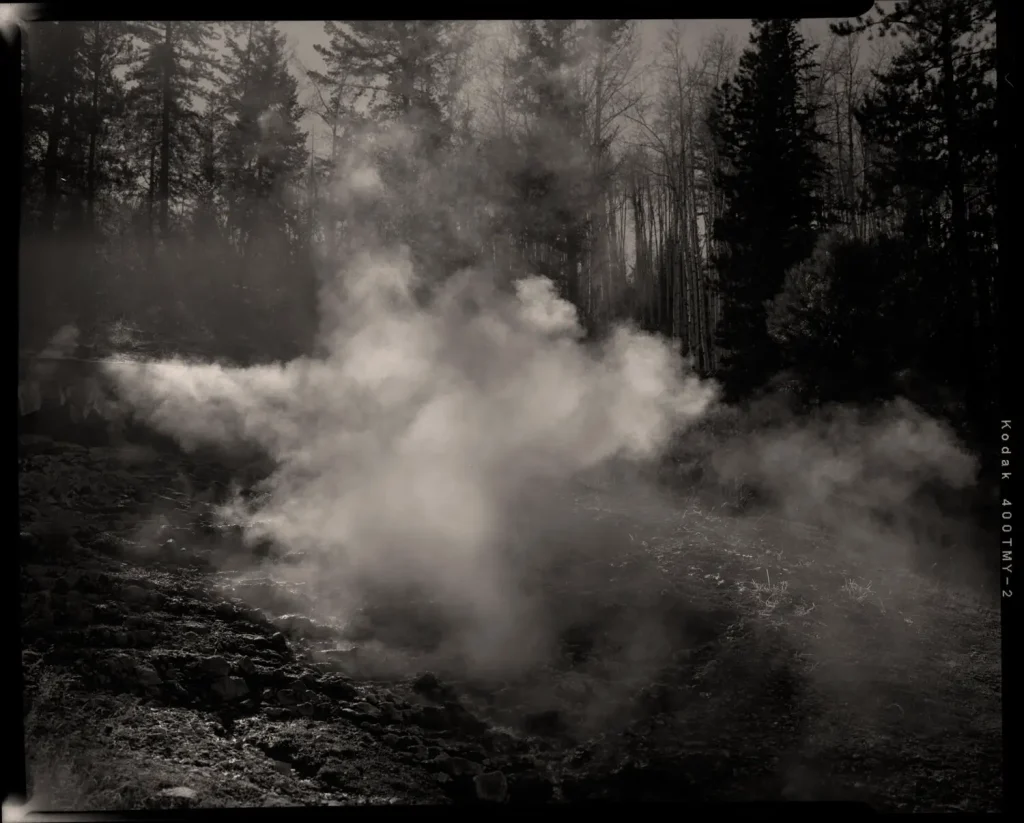
The very first photograph of me is a pinhole photograph. Soft, blurred, a little speckled from the light-sensitive typesetting paper my dad used to take the picture in 1980, it’s the perfect image of a newborn baby. Throughout my childhood, my dad took pinhole photographs with his homemade cameras. When I was in my early teens and found some expired photo paper in the barn, my dad showed me how to load up those same cameras, made a make-shift darkroom for me in the stairwell to the cellar, and encouraged my image-making. Now, almost 30 years later, I am still making images, occasionally with those same, now old, pinhole cameras, but more often with a 4×5″ view camera. No matter the camera I use, the soft, blurred, romantic look of the pinhole photograph often finds its way into my work, a lasting effect of how a magical childhood formed my view of the world, blur and all.
Rosemary Kate Jesionowski | Richmond, VA / Lake Charles, LA, USA
Website | Instagram | Instagram
Calumet 4×5 monorail view camera, Kodak T-Max 400 film, contact printed on handmade albumen paper (2019)
Hank Beckmeyer
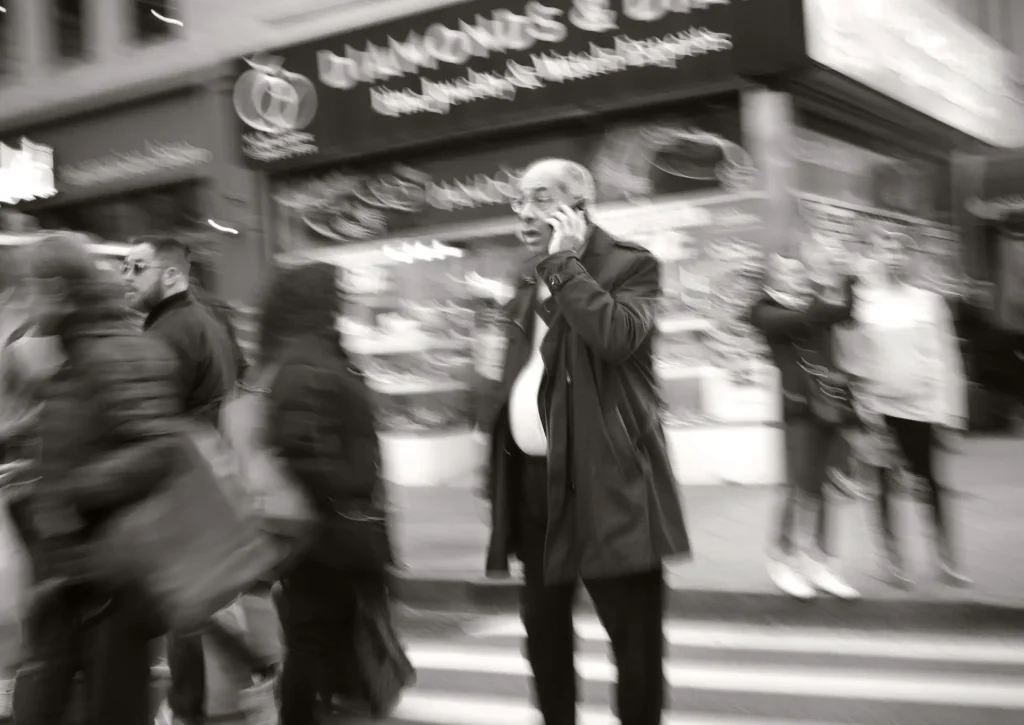
It’s hard not to be influenced by William Klein. His images are direct, confrontational, playful, and always contain a “truth”; in this case, his assertion that “blur is part life” rings so very true. In a world seemingly even more kinetic than in Klein’s time, blur in vision and thought is an everyday occurrence.
This photo was actually part of an experiment to see how far I could take Klein’s methodology – wide-ish angle lens, up-close, slow shutter speed. Klein often interacted with his subjects, but I eschewed this approach and tried to be as discreet as possible. This shot wasn’t from the hip; I actually used the viewfinder and “composed” as much as time allowed. I think it captures the energy and dynamics of the moment nicely, in a slightly abstract and surreal way.
Hank Beckmeyer | California, USA
Instagram | Flickr
Fujifilm XE-2, XF 27mm f/2.8 lens (2015)
Celine Mcilmunn
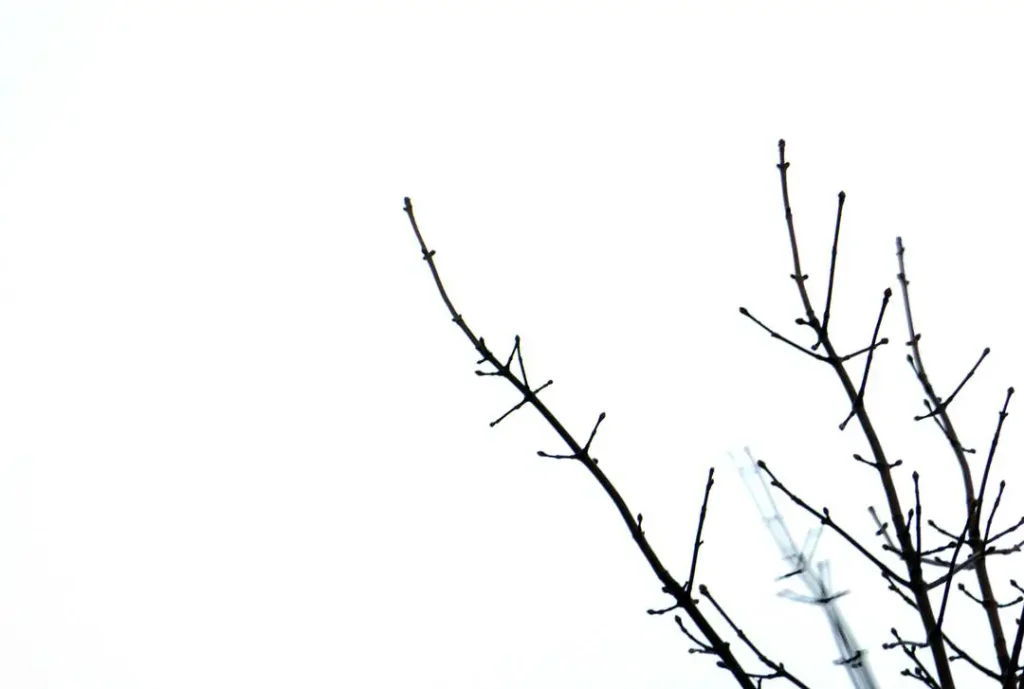
The moment in time that a photograph captures isn’t always the one that the photographer was aiming for. The missed opportunity to capture what was intended can sometimes feel like a loss, but other times something else happens and that which would have otherwise gone unnoticed is revealed. This photograph was one of those moments for me.
The bird and I both chose the same moment to make our move; me to take a photograph and the bird to take flight, evade capture and disappear from the scene.
Celine Mcilmunn | Glasgow, Scotland
Instagram
Panasonic Lumix TZ35
Patrick Aaron Stromme
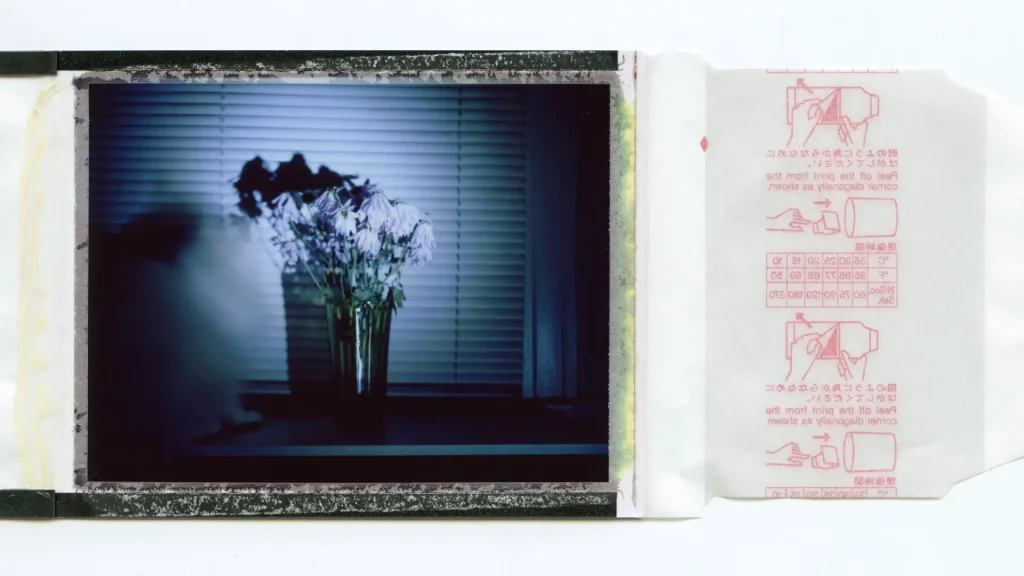
Humanity. People. Flowers are pretty but they wither. The planet and its life move, vibrate, blur. Grasping at their essence, people try to comprehend the fact that outside the window the clock continues to tick, inching them forward towards some type of ending – or some new beginning? The unknown, but the brain questions – “why?” Everything is a constant reminder of this – rusty nails, barns fallen along the highway, the discolored white plastic on children’s toys from the 90’s. Time is fleeting and continues to move, whether at a quick white cat’s pace or a slowly dying flower’s.
Polaroid or peel-apart film enhances the feeling of this transient place, developing only a moment after the snap of the shutter. It’s a one-off, not to ever be replicated again, and in turn it becomes part of the moment itself. It was there when it happened. It’s physical in a digital world, and its physicality will also turn to dust between the floorboards in the box in my attic, someday.
But today it is here and intact in my hands.
Patrick Aaron Stromme | Central Wisconsin, USA
Instagram | Website
Polaroid 600SE, Fuji FP-100C instant film
Jamie Marcellus
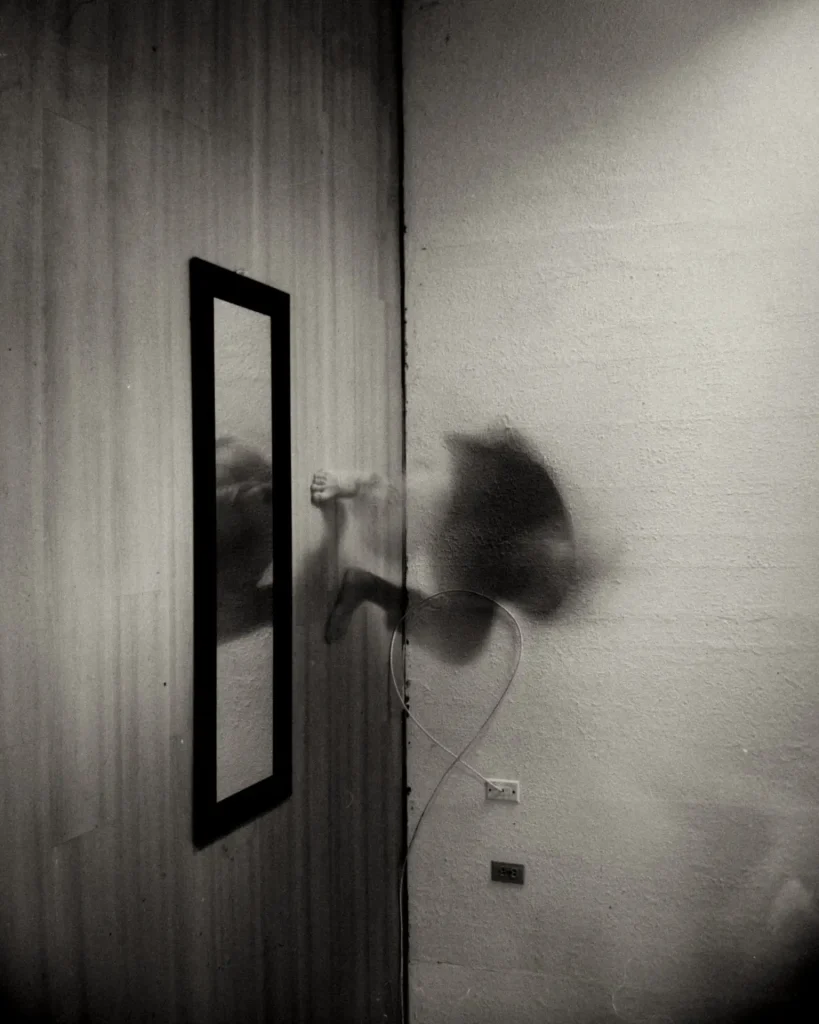
What I love about long exposure portraits and other work (in this instance a self-portrait) is the amount of life contained within the frame. Thoughts, feelings, breath, heart-beats, and time are all captured in the twenty or so seconds the lens was open. There is now, and also then, all contained in the image. The magic of how the film or sensor registers light, time and movement is a marvel. There is often frustration and failure in the approach, but every once in a while, the stars align and create soulfulness. Long exposures capture not just the visual scene, but the emotion that exists in these moments.
Jamie Marcellus | Toronto, Canada
Instagram | Flickr | Website
Cambo SC 4×5 camera, 10.5cm Zeiss Tessar shutterless barrel lens, Ilford FP4 film
Kathryn Reichert
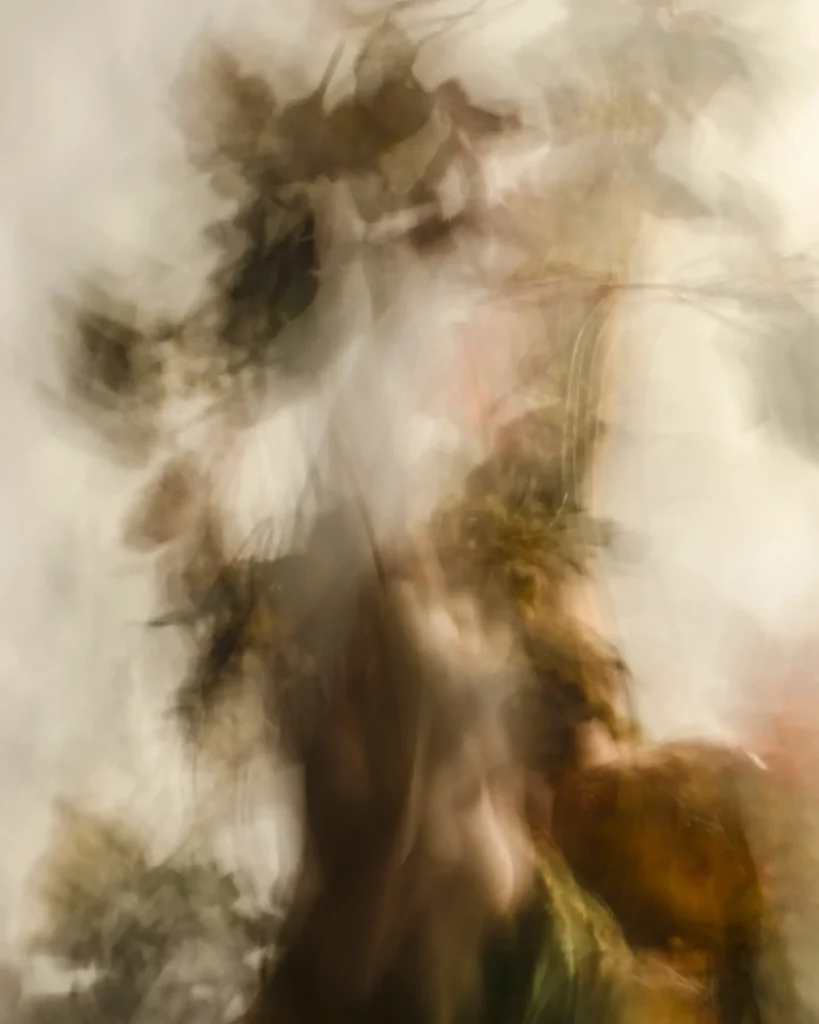
One of the greatest tricks that life has played on us is perhaps the perception that there is anything but blur! Everything that makes up life is so subjective that we’ve become quite adept at crafting measurements to avoid the fluidity of blur. We lean so heavily into relativity that we forget definitive linearity is merely a tool.
Take time, for instance. Our experience of “duration” stretches and compresses throughout the day; 30 minutes of tedious small talk can’t possibly be the same as 30 minutes of a good book (speaking as an introvert, anyway). But a moment is now simply that, a moment, and the idea that it could be anything else has become a novelty. We navigate these blurred lines everywhere with incessant categorizing, assigning finite codes to colors in an endless spectrum. We make do, but it’s hard to ignore blurred lines as we’re physically redefining the boundaries of the blackest black.
Photography is the perfect tool to record life as we live it. Each exposure records the interruption of light by our form moving through it, creating our individual imprints in space, offering linearity and small anchors of familiarity within its boundless expanse.
Kathryn Reichert | Branchburg, NJ, USA
Website | Instagram
Nikon D5100, 35mm f/1.8 lens (f/4, 8 sec, ISO 100)
Billy Sanford
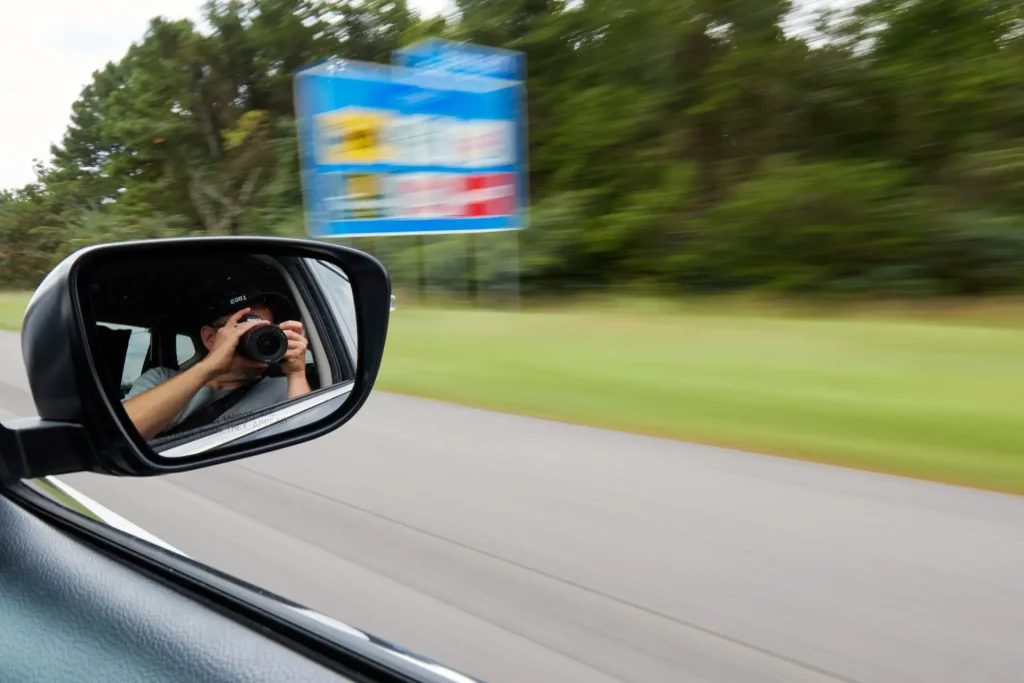
Ever since George Eastman coined the phrase “You Press the Button, We Do the Rest” people have sought ways to make photography more accessible. Sometimes by making it more affordable, sometimes by making it easier to take better pictures. Auto focus, image stabilization, fast shutter speeds and high-resolution sensors are expectations in modern cameras. Many of these technological advancements have helped overcome obstacles to obtaining sharp images. But the best image isn’t always the one that is the sharpest. Or at least, the sharpest images do not always do the best job of conveying what it was like to be in a scene in the moment. That’s because blur is a part of our visual experience.
For example, consider being on a road trip. You are focused on what is directly ahead of you, but the scene closer to the periphery of your sight becomes increasingly blurred. It would have been possible to take this picture with the trees and signs on the side of the road in sharp focus. But then it would have seemed as though we were parked. And however sharp the image might have been, it wouldn’t have captured the human experience of it.
Billy Sanford | Birmingham, AL, USA
Instagram | Twitter | Flickr
Canon EOS 7D MkII, 16-35mm lens @ 16mm (f/14, 1/20 sec, ISO 100)
Flora Malinash
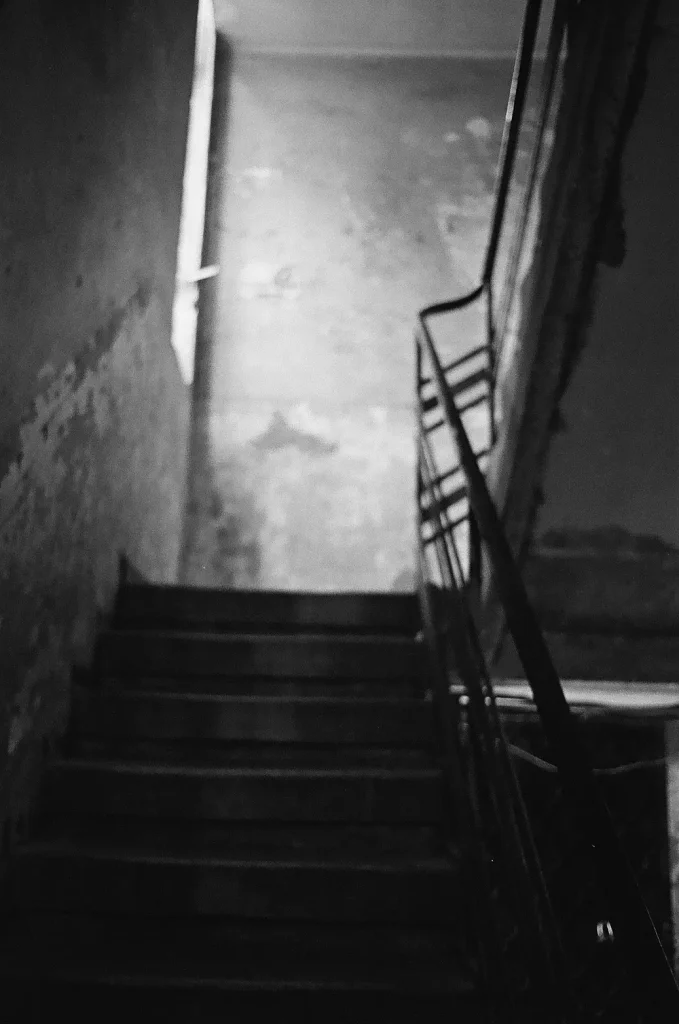
Fridays were designated for my mom and I, the day she used to take me to Jaffa Tel Aviv Road, walking around for hours, by textile shops and factories.
I remember Yosef the shoemaker, he used to make special shoes just for my feet due to a medical issue I had. The smells of shoe glue, the sounds of machinery, of loaded wagons and cars, the rhythm of life and trade.
Years later, I return to the road. A different time. I wander around, gaze at the inanimate display windows, take stock of what has changed since my last visit. I take pictures.
An empty stairwell in a building on Jaffa Tel Aviv Road. Crisp, readable photography allows us to see the world we know. But what happens when you deliberately “fail” to focus? Sometimes, the image leaves more room for interpretation, to see not only what was there but also what there may be. A less automatic way of seeing – a defamiliarisation. The eternal tension between documentation and forgetfulness.
Flora Malinash | Tel Aviv, Israel
Instagram
Pentax K1000, 35mm lens, Kodak Tri-X 400 film (2020)
Steve Curzon
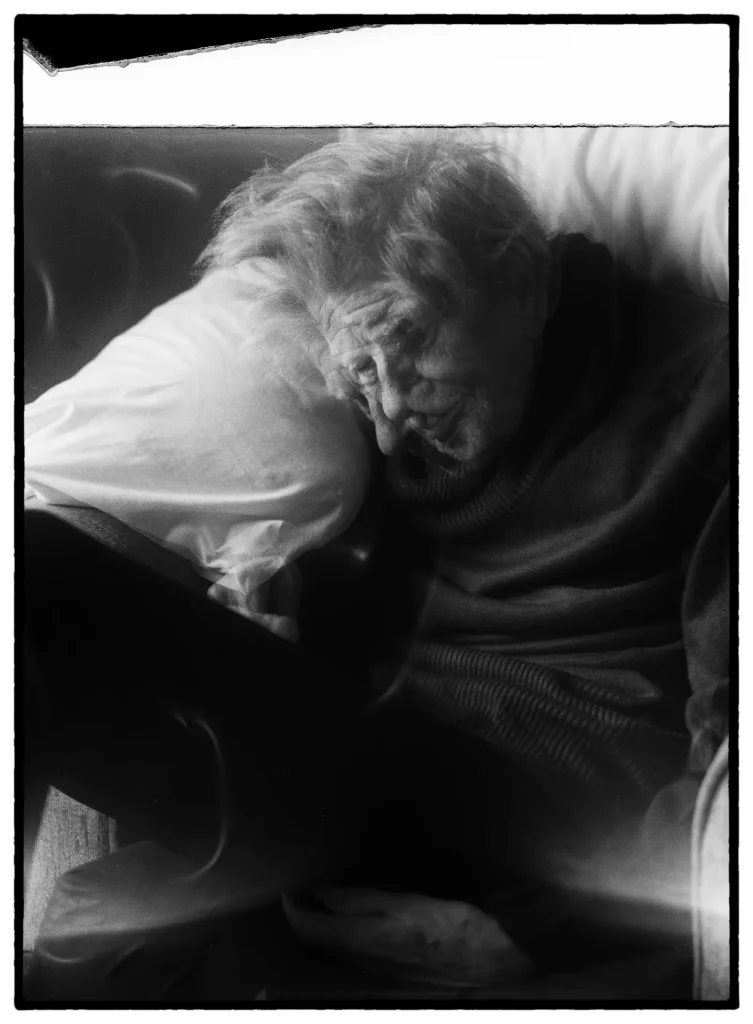
After a while it became clear that we needed to move her in with us. This was in 2016. Our house wasn’t big enough, so we had to sell both our house, and hers, to buy something where we could look after her. Alzheimer’s. It was her biggest fear, after seeing her father (my grandfather) succumb to the disease in an old people’s home. We moved into the new place in June 2017, and it was perfect. She was at least comfortable, and had her own space and privacy, and we could keep her safe. There were good days and bad days. The good days were punctuated by surprising bouts of lucidity and laughter. The bad days were shrouded by confusion and anxiety. The photograph portrays my mother on one of the bad days. The blurring wasn’t intentional for this portrait, it just happened… but it captures that confusion remarkably well. She left us in April 2021, finally free of the indignity that is a by-product of the disease. Sleep well, mum.
Steve Curzon | Warrington, UK
Website
Linhof Press camera, Ilford HP5 Plus film
Postscript
A quick final note from me (Sroyon). If you would like to take part in similar projects in future, or if you’re generally interested in photography books and theory, you are more than welcome to join our Facebook group. If you’re interested in the idea of photographic blur, check out this post by Hamish, and my review of two related photo-books. My own Instagram occasionally features blurry photos, thanks to my fascination with pinhole cameras and ultra-slow film (and occasionally, thanks to my own mistakes). I’m also curious to know your thoughts on the topic: Do the images in this post speak to you, or do you like pictures to be clear and sharp? Does blur have a place in your own photography?
Finally, I should say, I dithered over whether to place Steve’s powerful contribution at the end – to end on a sombre note, as it were. “Hope it’s balanced by some happier contributions!” is what Steve said to me in an email. But in the end I kept it. Life has road trips, playful cats and birds in flight. But sorrow, like blur, is a part of life. Thanks for reading.
Share this post:
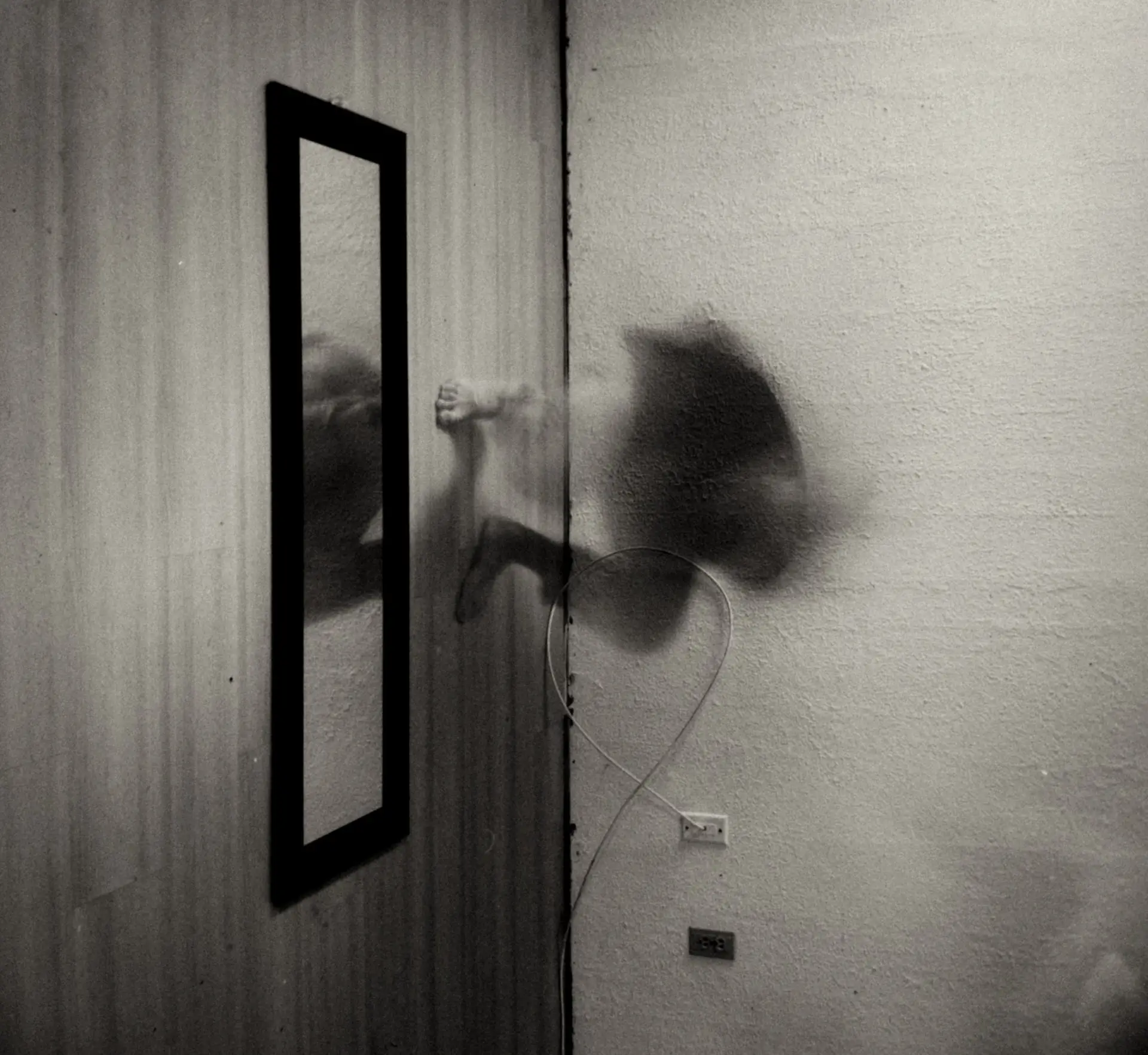








Comments
Steve on “Blur is a Part of Life” – A Collaborative Project
Comment posted: 29/10/2021
I find I'm continually drawn to photographs that are blurred or indistinct in some way. They leave space for interpretation, and give that feeling that, yes, I've seen that too.
Comment posted: 29/10/2021
Comment posted: 29/10/2021
Comment posted: 29/10/2021
Peter Roberts on “Blur is a Part of Life” – A Collaborative Project
Comment posted: 29/10/2021
You were absolutely correct putting Steve's emotive image at the end. I actually said "Wow" out loud when I saw it. It makes the whole piece a journey through life starting with Rosemary's reference to "the perfect image of a newborn baby". And a journey, of course, implies movement and hence blur.
Thank you so much for putting it together.
Comment posted: 29/10/2021
Joris on “Blur is a Part of Life” – A Collaborative Project
Comment posted: 29/10/2021
Comment posted: 29/10/2021
Dan Castelli on “Blur is a Part of Life” – A Collaborative Project
Comment posted: 31/10/2021
Comment posted: 31/10/2021
Holly Gilman on “Blur is a Part of Life” – A Collaborative Project
Comment posted: 09/11/2021
Comment posted: 09/11/2021